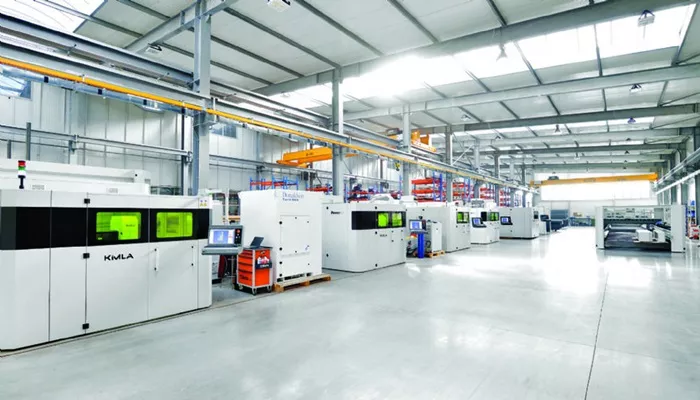Daltons Wadkin, a Nottingham-based company established in 1901, has been appointed the exclusive representative for Kimla fibre lasers in the UK and Ireland. Known for supplying and manufacturing industrial machinery for various materials, including metals, plastics, composites, and wood-based panels, Daltons Wadkin will now offer machines from the European manufacturer Kimla.
Kimla’s fibre lasers are designed to provide sheet metal fabricators with advanced technology, precision, and long-term operational savings—critical factors in today’s competitive market.
A standout feature of Kimla’s fibre lasers is their high-performance linear drive system. Unlike the ball-screw or rack-and-pinion mechanisms found in many competing machines, which suffer from issues like backlash and wear, Kimla’s contactless magnetic linear drives offer ultra-fast acceleration and deceleration, up to 6g. This system ensures high precision and cutting speed while reducing mechanical wear and tear.
By eliminating mechanical components that degrade over time, Kimla’s linear drives also significantly reduce maintenance requirements, ensuring reliable high-speed performance for both complex and high-volume production tasks.
Another key advantage of Kimla’s fibre lasers is their energy recirculation system. Traditional fibre lasers waste energy during acceleration and deceleration cycles, leading to higher costs. However, Kimla’s innovative solution allows energy from a decelerating axis to be transferred to an accelerating axis through common DC Bus technology. This reduces energy consumption by up to 70%, making Kimla fibre lasers both cost-effective and eco-friendly.
Additional features enhancing operational efficiency include fully automated pallet shuttle systems, anti-collision technology, and automatic head height adjustment. The lasers also include Kimla’s dynamic vector analysis (DVA) system, which optimizes cutting paths in real-time, boosting productivity without compromising quality. The monolithic frame construction further ensures stability and accuracy, eliminating the need for costly foundations.

